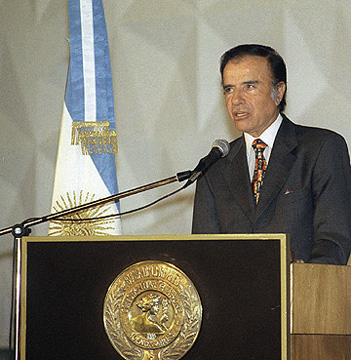|
Aicuña
Aicuña is a municipality and hamlet in La Rioja Province in northwestern Argentina Argentina, officially the Argentine Republic, is a country in the southern half of South America. It covers an area of , making it the List of South American countries by area, second-largest country in South America after Brazil, the fourt .... References Populated places in La Rioja Province, Argentina {{LaRiojaAR-geo-stub ...[...More Info...] [...Related Items...] OR: [Wikipedia] [Google] [Baidu] |
Provinces Of Argentina
Argentina has 23 provinces (, singular ) and one autonomous city, Buenos Aires, which serves as the federal capital, as determined by Congress. The provinces and the capital have their own constitutions and exist under a federal system. History During the War of Independence, cities and their surrounding areas became provinces through local councils ( cabildos). This process was finalized during the Anarchy of the Year XX, forming the first 13 provinces. Jujuy seceded from Salta in 1834, and the thirteen provinces became fourteen. After seceding for a decade, Buenos Aires Province accepted the 1853 Constitution of Argentina in 1861, and its capital city was made a federal territory in 1880. A law from 1862 designated as national territories those territories under federal control but outside the frontiers of the provinces. In 1884 they served as bases for the establishment of the governorates of Misiones, Formosa, Chaco, La Pampa, Neuquén, Río Negro, Chubut, ... [...More Info...] [...Related Items...] OR: [Wikipedia] [Google] [Baidu] |
La Rioja Province (Argentina)
La Rioja (), officially Province of La Rioja is a province of Argentina located in the west of the country. The landscape of the province consists of a series of arid to semi-arid mountain ranges and agricultural valleys in between. It is in one of these valleys that the capital of the province, the city of La Rioja, lies. Neighboring provinces are, from the north clockwise, Catamarca, Córdoba, San Luis and San Juan. The Triassic sauropodomorph dinosaur '' Riojasaurus'' is named after the province. History Petroglyphs created by early indigenous peoples at the Talampaya National Park are dated around 10,000 years BC. Succeeding cultures of indigenous peoples developed here. The Diaguita, Capayan and the Olongasta peoples inhabited the territory of present-day La Rioja Province at the time of encounter with the Spanish colonists in the 16th century. Juan Ramírez de Velazco founded ''Todos Los Santos de la Nueva Rioja'' in 1591 under the government of Tucumán of the ... [...More Info...] [...Related Items...] OR: [Wikipedia] [Google] [Baidu] |
Departments Of Argentina
Departments () form the second level of administrative division (below the Provinces of Argentina, provinces), and are subdivided in Municipalities of Argentina, municipalities. They are extended in all of Argentina except for the Buenos Aires Province, Province of Buenos Aires and the Buenos Aires, Autonomous City of Buenos Aires, the national capital, each of which has different administrative arrangements (respectively Partidos of Buenos Aires, ''partidos'' and Communes of Buenos Aires, ''comunas''). Except in La Rioja Province, Argentina, La Rioja, Mendoza Province, Mendoza, and San Juan Province, Argentina, San Juan Provinces, departments have no executive authorities or assemblies of their own. However, they serve as territorial constituencies for the election of members of the legislative bodies of most provinces. For example, in Santa Fe Province, each department returns one senator to the provincial senate. In Tucumán Province, on the other hand, where legislators are e ... [...More Info...] [...Related Items...] OR: [Wikipedia] [Google] [Baidu] |
Time In Argentina
Argentina is located at a longitude that would naturally put it in the UTC−04:00 or UTC−05:00 time zone; however, it actually uses the UTC−03:00 time zone. Argentina determines whether to change clocks in observation of daylight saving time on a year-by-year basis, and individual provinces may opt out of the federal decision. At present, Argentina does not change clocks. The Argentine Hydrographic Service maintains the official national time. History The first official standardization of time in Argentina took place on 31 October 1894, with establishment of UTC−04:00 as the nation's standard time Standard time is the synchronization of clocks within a geographical region to a single time standard, rather than a local mean time standard. Generally, standard time agrees with the local mean time at some meridian that passes through the r .... From 1920 to 1969, the official time switched biannually between UTC−04:00 as standard time in winter and UTC−03:0 ... [...More Info...] [...Related Items...] OR: [Wikipedia] [Google] [Baidu] |
Argentina
Argentina, officially the Argentine Republic, is a country in the southern half of South America. It covers an area of , making it the List of South American countries by area, second-largest country in South America after Brazil, the fourth-largest country in the Americas, and the List of countries and dependencies by area, eighth-largest country in the world. Argentina shares the bulk of the Southern Cone with Chile to the west, and is also bordered by Bolivia and Paraguay to the north, Brazil to the northeast, Uruguay and the South Atlantic Ocean to the east, and the Drake Passage to the south. Argentina is a Federation, federal state subdivided into twenty-three Provinces of Argentina, provinces, and one autonomous city, which is the federal capital and List of cities in Argentina by population, largest city of the nation, Buenos Aires. The provinces and the capital have their own constitutions, but exist under a Federalism, federal system. Argentina claims sovereignty ov ... [...More Info...] [...Related Items...] OR: [Wikipedia] [Google] [Baidu] |

